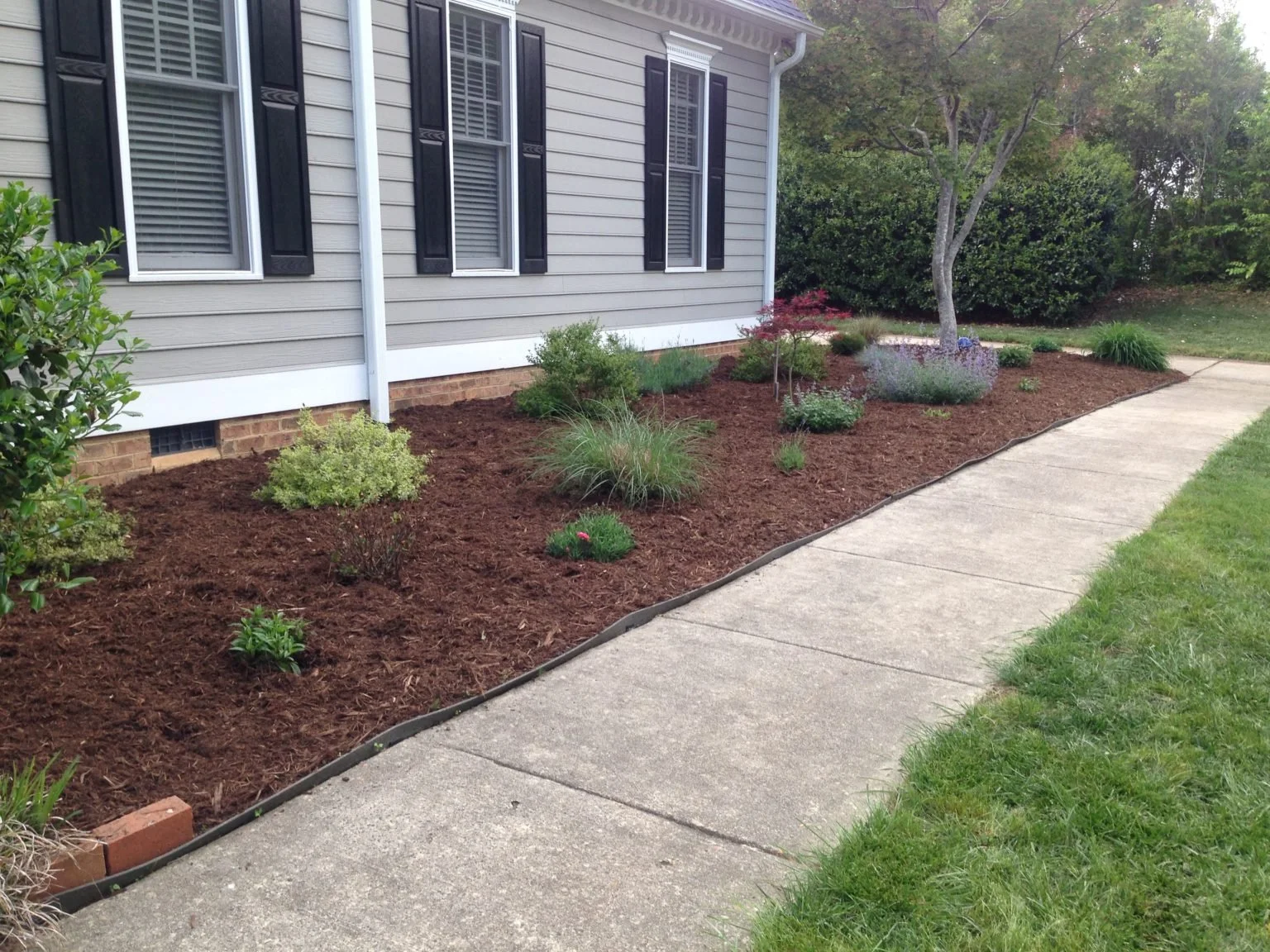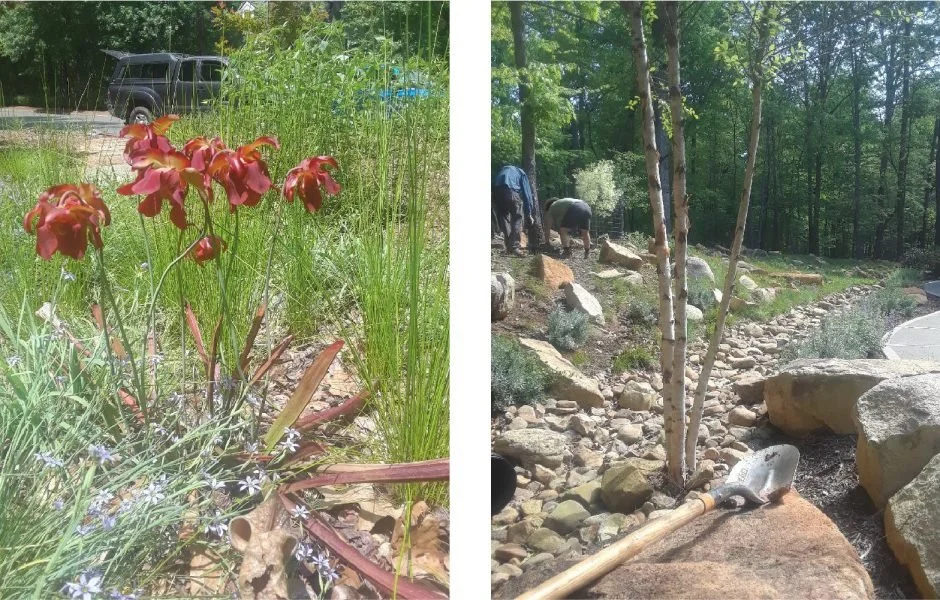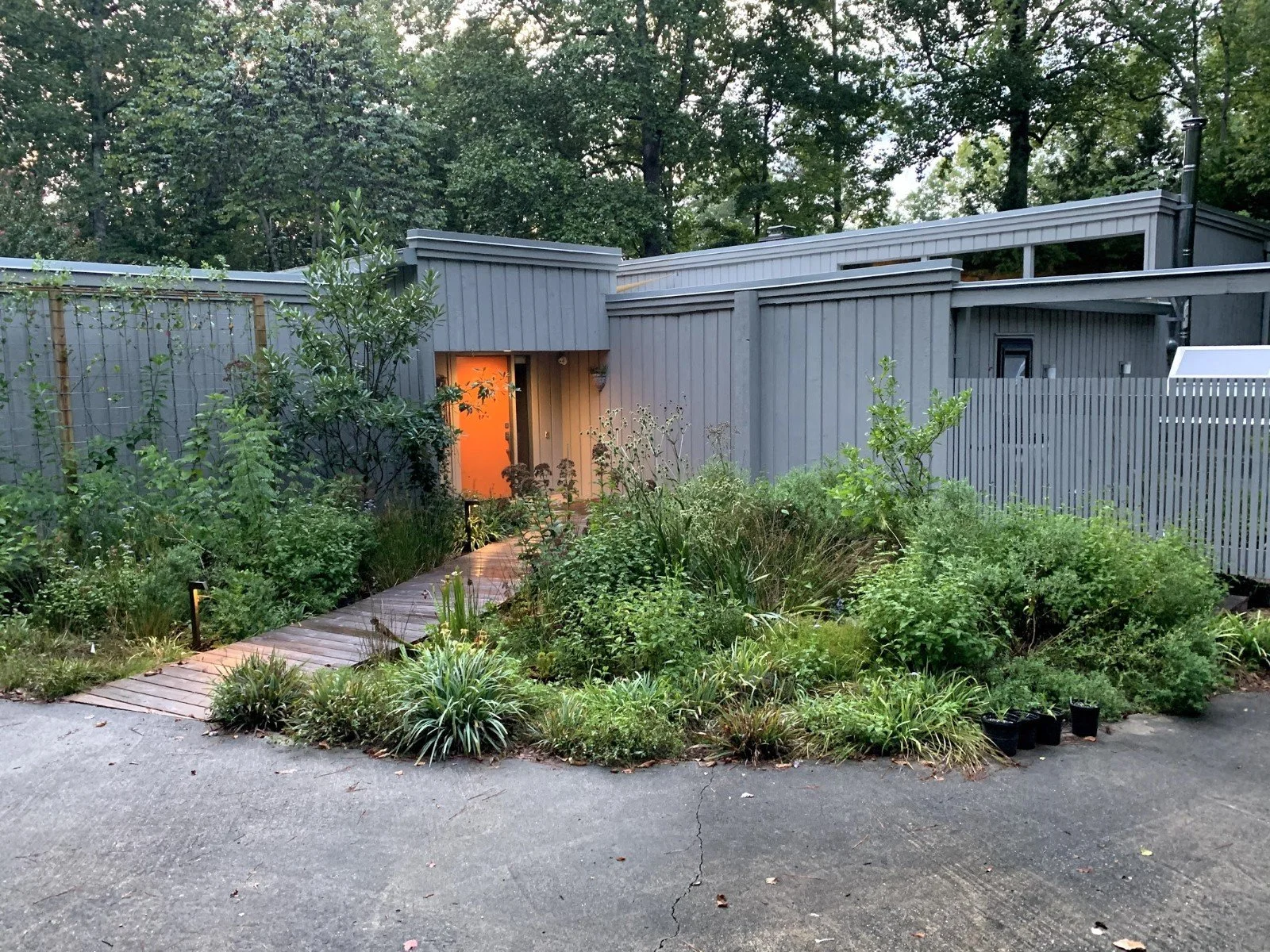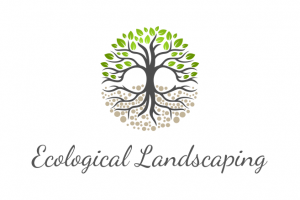Spring Means Garden & Landscape Projects Are in Full Bloom
The daffodils in the large front bed of my yard always seem to push their way to the surface sometime in January. I grew up in Massachusetts. Who is ready to start thinking about yard clean-up and spring planting in January? I am still content to hibernate for at least another month, maybe even six weeks – it depends what direction good ol’ Punxsutawney Phil sends me in. But no. I live in North Carolina now. Here, you could have 70+ degree days in January, or snow on the ground in March. You never quite know what the winter months will bring. And therefore, you never quite know how to plan for your spring yard projects. But, the wild climate does offer no shortage of possibilities for what you may envision for your dream landscape.
I am by no means an expert in horticulture or landscaping. I have a hard time remembering the names of plants, I take lots of shortcuts when working on a project and my enthusiasm for a particular endeavor will quickly wane when I don’t achieve the results I am after. I’ve learned a lot through trial and error, I’ve picked up some helpful books through the years, and I’ve stuck with what I like and what I know. A few things I try to adhere to as much as possible in my own landscape projects are perennials, “deer-resistant” plants, and more so lately, native plants.
A perennial planting bed in front of the author’s home.
According to the National Gardening Association, perennials are plants that live for more than two years, with some described as short-lived perennials having a shorter life span, even under perfect growing conditions. However, many short-lived perennials also self-sow or drop seeds from which new plants grow. Once established, due to their far-ranging roots, many perennials need less attention than annuals. However, perennial plants do require maintenance, such as fertilizing, watering, pruning, dividing, weeding, and mulching. Unlike many annual flowers, we all know and love, most perennial plants have a distinct bloom period. And even those touted as ever-blooming usually have a period of heavy bloom, with sporadic blooming the rest of the season. But, many perennials like to spread and will fill out your garden and provide additional color each year.
There are a vast array of options when it comes to perennial plants, so it helps to educate yourself before planting. Visit local perennial gardens that feature perennials to familiarize yourself with what is well-suited to our region and to experience the plants while they are in bloom. Perennials are a long-term commitment, so a little extra planning will pay off with healthier, happier plants in the long run.
I reached out to Greg Walker, a local horticulturist and the owner of Ecological Landscaping, to answer some questions about native plants and landscaping in general in North Carolina.
A pitcher plant in full bloom and a dry river bed & meadow by Ecological Landscaping.
Tell us a little about your background and your company.
I’m originally from Ohio. I have a degree in horticulture from Ohio State University and a degree in biology from Kent State University, with a focus in ecology. I’ve worked for a few landscape businesses in Ohio, and my most significant position there was managing the grounds department at Kent State University Stark campus for 17 years. After relocating to North Carolina, I began working with Ben Skelton who owned Skelton’s Landscaping Service, a native plant landscape business. After nearly four years with the business, Ben moved to Wisconsin to follow his wife’s career. When he moved, a little over six months ago, I continued the work with my business, Ecological Landscaping. I specialize in removing invasive species, installing bird habitat, pollinator gardens, rain gardens and woodland gardens utilizing native plants. I also do a little bit of landscape construction.
What are native plants?
Native plants are plants that are indigenous to the region. In the broadest reference, plants can be native to the eastern United States and becoming more specific, native to the southeastern US, native to North Carolina, and native to the Piedmont region of NC.
Why native plants? What are the benefits?
Native plants are essential for a healthy and balanced functioning ecosystem. The native birds and insects depend on native plants for food and habitat because they have coevolved with these species. Therefore, they reciprocally benefit each other. I’ve even heard from clients that as we attracted more birds to their property, they had fewer mosquitoes. Native plant landscapes are sustainable, not requiring chemicals or manicuring that conventional landscapes require to maintain appearances. A native plant landscape focuses on the service that it provides to the environment, rather than a sole focus of aesthetics. However, if done properly a native plant landscape can be very aesthetically pleasing.
A rain garden with an elevated boardwalk by Ecological Landscaping.
What do people need to know about landscaping with native plants?
When landscaping with native plants, the most important considerations, which would be the same for any plant, would be site selection. You want to choose plants that are appropriate to the site, taking into consideration sun, shade, soil moisture, and space for the plant to reach maturity. Another important consideration in this area is deer pressure. You want to check if the plant is palatable to deer and choose accordingly. If a plant is susceptible to deer pressure, then it should be protected with a wire cage or barrier, or use deer repellant.
Where can folks go to buy native plants?
Many of the retail garden centers in the area have dedicated spaces for native plants, such as Southern States, Piedmont Feed and Garden Center, and Fifth Season. Another great source in the area is Cure Nursery in Pittsboro, which exclusively sells native plants.
Do landscapes need to be 100% native to be ecological?
Landscapes do not have to be 100% native to be ecological. A recent study of Carolina chickadee populations which was published in Proceedings of the National Academy of Sciences found that in areas that are made up of less than 70% native plant biomass, the Carolina chickadees will not produce enough offspring to sustain their population. At 70% or higher the birds can thrive.
Other resources:
Greg Walker of Ecological Landscaping can be reached via email at in2theforest@gmail.com or phone at 330-313-5893. Get in touch today to discuss your next bird habitat, native plant, pollinator or rain garden project.
Planter boxes on your deck can function as mini gardens if space is limited.
Gardening, yard work, planting, yard maintenance, landscaping – whatever outdoor work you may engage in – can be a very satisfying way to spend a few hours, a day or a weekend. It connects us with nature, allows us to be alone with our thoughts, and provides very tangible and immediate results. I often refer to my hours outdoors in my yard as my “therapy” and would encourage anyone to give it a try. You don’t have to have the quintessential “green thumb” to add something new and fun to your yard, deck or porch, just the desire to reconnect with the outdoors.






